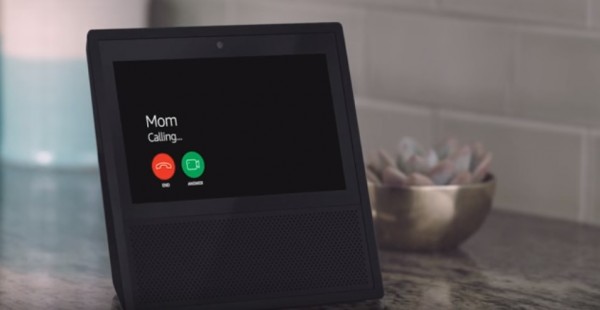
The Alava Association for the Deaf has been selected to receive the Culture Grant!
The award consists of an Internet guidance session with a body from the cultural area. A total of 8 organisations put themselves forward for the grant.
Amongst the organisations that applied for the grant are Córdoba Acoge, Ojobegi, Teretere Education Centre, Yehudi Menuhin Foundation Spain, Federació d’Entitats Calàbria 66, l’Associació Dones Migrants a Catalunya, Art Lliure, Arabako Gorrak and Afaus Pro Salud Mental. The subject matter of the aformentioned organisations is varied, and ranges from social change via an integrated model directed towards different cultures, to the investigation and production of intangible heritage to education through art.
The Culture Grant, intended for not-for-profit entities, consists of a guidance session carried out by iWith.org and a subsequent report with options on how they can make the most out of the Internet, adapted to the communicative needs of the organisation. In 2015, the grant was awarded to the Guachipelín Foundation and in 2016, to Diversión Solidaria. In the coming months, a new call for grant applications will be made, for entities from another arena, which may be sport, health or science.
Congratulations ARABAKO!


The Alava Association for the Deaf has been selected to receive the Culture Grant!
The award consists of an Internet guidance session with a body from the cultural area. A total of 8 organisations put themselves forward for the grant.
Amongst the organisations that applied for the grant are Córdoba Acoge, Ojobegi, Teretere Education Centre, Yehudi Menuhin Foundation Spain, Federació d’Entitats Calàbria 66, l’Associació Dones Migrants a Catalunya, Art Lliure, Arabako Gorrak and Afaus Pro Salud Mental. The subject matter of the aformentioned organisations is varied, and ranges from social change via an integrated model directed towards different cultures, to the investigation and production of intangible heritage to education through art.
The Culture Grant, intended for not-for-profit entities, consists of a guidance session carried out by iWith.org and a subsequent report with options on how they can make the most out of the Internet, adapted to the communicative needs of the organisation. In 2015, the grant was awarded to the Guachipelín Foundation and in 2016, to Diversión Solidaria. In the coming months, a new call for grant applications will be made, for entities from another arena, which may be sport, health or science.
Congratulations ARABAKO!


How can you publicise and share your NGO events?
The organisation of activities, workshops, conferences, courses or seminars is a common everyday task for non-profit organisations. We can tell you about a few tricks to maximise your performance using the tools provided by the internet.
1) Post your event on your web page and highlight it!
The cover letter of any non-profit organisation is their web page. In this space, they share news and information about themselves with people online - who they are, what they do and how to contact them. Sharing the event on your NGO web page will ensure that internal and external stakeholders will know about your activity. Yet this is not enough - highlight it and pin it on your homepage to attract attention and avoid visitors going crazy looking for it! And finally, geolocalising is also a good option for making the location known.
2) Use the “Events” tool on Facebook!
Social networks are brilliant communication tools for reaching large numbers of people. Facebook allows you to create an event and to perform actions like controlling the turnout, sending reminders about the date of the event, sharing information regarding the event with only those taking part, and gaining higher visibility. Other networks like Twitter and Instagram can also help in sharing the event, in particular, through the proper use of hashtags.3) Send bulletins or newsletter updates to your readers!
Email marketing tools are used for directly reaching the inbox of stakeholders close to your organisation. Creating a bulletin including information about the event - like time, location, guest speakers, or how to sign up - is a quick, simple, and effective way to reach many people who have already been in contact with your NGO.4) Why not design a publicity campaign in Google AdWords?
Google offers a grant programme specifically for non-profit organisations called Google for Nonprofits. Through this programme, NGOs can opt for an advertising grant in Google AdWords to use for sharing their projects and working with SEM on Google. Web users often find information through Google, and coming upon the advert for your event may entice them.5) Collect your organisation’s pictures in an album!
Keeping a photo gallery on your social networks, either through albums or on your web page, is a very powerful visual tool to show how your event went. Through these images, people online can see what happened during the event, and you can share a series of values that can encourage them to join the cause.If you would like further information regarding how to manage the communication of your event on the internet, you can contact us here.
For organisations managing the Internet Service Platform Abcore Cadí, here you can find all you can do with the events tool.


How can you publicise and share your NGO events?
The organisation of activities, workshops, conferences, courses or seminars is a common everyday task for non-profit organisations. We can tell you about a few tricks to maximise your performance using the tools provided by the internet.
1) Post your event on your web page and highlight it!
The cover letter of any non-profit organisation is their web page. In this space, they share news and information about themselves with people online - who they are, what they do and how to contact them. Sharing the event on your NGO web page will ensure that internal and external stakeholders will know about your activity. Yet this is not enough - highlight it and pin it on your homepage to attract attention and avoid visitors going crazy looking for it! And finally, geolocalising is also a good option for making the location known.
2) Use the “Events” tool on Facebook!
Social networks are brilliant communication tools for reaching large numbers of people. Facebook allows you to create an event and to perform actions like controlling the turnout, sending reminders about the date of the event, sharing information regarding the event with only those taking part, and gaining higher visibility. Other networks like Twitter and Instagram can also help in sharing the event, in particular, through the proper use of hashtags.3) Send bulletins or newsletter updates to your readers!
Email marketing tools are used for directly reaching the inbox of stakeholders close to your organisation. Creating a bulletin including information about the event - like time, location, guest speakers, or how to sign up - is a quick, simple, and effective way to reach many people who have already been in contact with your NGO.4) Why not design a publicity campaign in Google AdWords?
Google offers a grant programme specifically for non-profit organisations called Google for Nonprofits. Through this programme, NGOs can opt for an advertising grant in Google AdWords to use for sharing their projects and working with SEM on Google. Web users often find information through Google, and coming upon the advert for your event may entice them.5) Collect your organisation’s pictures in an album!
Keeping a photo gallery on your social networks, either through albums or on your web page, is a very powerful visual tool to show how your event went. Through these images, people online can see what happened during the event, and you can share a series of values that can encourage them to join the cause.If you would like further information regarding how to manage the communication of your event on the internet, you can contact us here.
For organisations managing the Internet Service Platform Abcore Cadí, here you can find all you can do with the events tool.


What will be the next tech revolution?
Amazon is launching Echo Show, an assistant for your living room in the form of a speaker that allows a glimpse of the next leap in technology: machines we can talk to.
Now, the Internet of Things has come, and it seems it's here to stay. Specifically, Amazon's latest venture is offering a future where a speaker, rather than the smartphone, is the key. EchoShow is a speaker plugged into an outlet, with a touchscreen, designed for the user to make videocalls, watch Youtube videos, or control all manner of household devices.
The new revolution in technology presents another improvement afforded by EchoShow: the ability to speak to the screen and see your voice input converted into video output. Imagine you ask EchoShow, “What are the best films out today?”, and the speaker responds by showing what you asked for in a video onscreen. The idea of this new advance is to substitute text with images. The device has yet to arrive in Spain, but will be available in the US on 28 June, for $299.
Much like Apple's Siri, Alexa is Amazon' virtual assistant. Artificial intelligence is coming into our homes, and all it needs is a plug for electricity and a wireless connection. This is the trend for the coming years. If you would like to know more about the Internet of Things, you can click on the following link.









